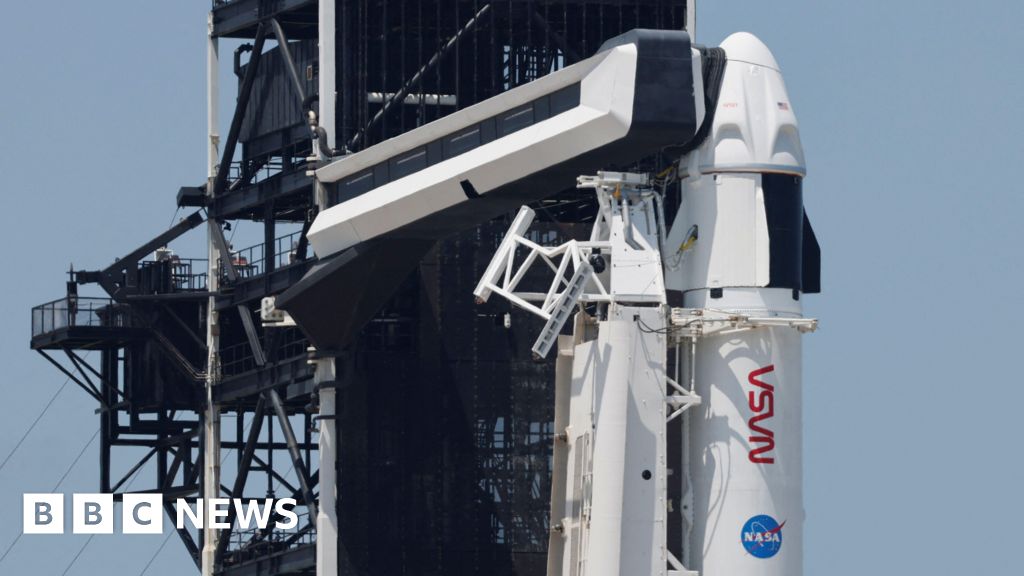Nasa is due to launch a mission to the moon in January
- Author, Richard Price
- Role, BBC News, West Midlands
All systems appear to be go for two packages from Staffordshire to blast off to the Moon as part of a mission to study the lunar landscape and atmosphere.
They have been prepared by spaceflight enthusiast Phill Parker from Newcastle-under-Lyme.
Mr Parker, who has met astronauts including Neil Armstrong and Buzz Aldrin, has been a space flight enthusiast since the 1960s.
His packages will be mounted into the payload bay of the giant Vulcan rocket for lift-off.
Mr Parker has previously sent several items into space, including a stamp that features Spitfire designer Reginald Mitchell who was born in Butt Lane, Newcastle-under-Lyme.
Image source, Phill Parker
One of the packages being sent to the moon contains a piece of rock from Butterton
One of the packages being sent in January contains pieces of rock collected from a volcanic ditch, discovered by Charles Darwin in 1842 at Butterton, Newcastle-under-Lyme.
The other package contains the seeds of a sycamore tree known as the “Moon tree seeds”, which were flown around the Moon aboard Apollo 14 in 1971.
Mr Parker said he wanted to send the tree’s seeds as a tribute to the Sycamore Gap tree, near Hadrian’s Wall, which was cut down earlier this year.
“In my wildest dream, I never ever thought I’d be able to send something that would land on the surface of the Moon,” he said.
“It will actually stay there – so a little piece of north Staffordshire will actually be on the Moon in a few weeks’ time.”
Image source, Phill Parker
Phill Parker has been a space enthusiast since the 1960s
The flight was originally due to depart six years ago, but for various reasons it failed to get off the ground.
Mr Parker said budgetary reasons, changes of space craft and change of rocket and technical difficulties all led to the project being delayed.
It is now due to take off during launch window that opens on 8 January.
It will then undertake an earth orbit lasting between 3 and 33 days, followed by a Moon orbit of between 4 and 25 days.

Dr. Thomas Hughes is a UK-based scientist and science communicator who makes complex topics accessible to readers. His articles explore breakthroughs in various scientific disciplines, from space exploration to cutting-edge research.








